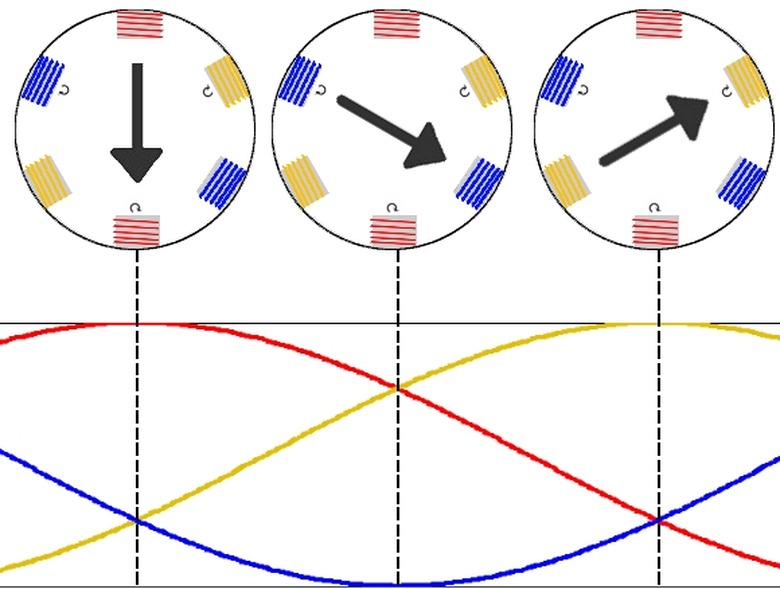Parts Of Induction Motors
An induction motor is a type of electric motor that converts electric power into rotary motion. An induction motor uses the principle of electromagnetic induction to cause the rotor to turn. The induction motor was created and patented by Nikola Tesla in 1888. Electric current is supplied to the stator, which induces a magnetic field that rotates. The rotating magnetic field interacts with the rotor, inducing current in the rotor. The interaction of the two magnetic fields results in a torque, turning the rotor within the motor casing. Because the induction motor does not use brushes like DC motors, there is less wear of the internal parts.
Stator
Stator
The stator is the stationary portion of the motor and delivers a rotating magnetic field to interact with the rotor. One or more copper windings make up a "pole" within the stator, and there is always an even number of poles within a motor. The electric current alternates through the poles, resulting in a rotating magnetic field.
Rotor
Rotor
The rotor is the central component of the motor, and is fixed to the shaft. The rotor is generally constructed of copper or aluminum strips attached at each end to a circular fixture. This configuration is called a "squirrel cage rotor" because of its appearance. The magnetic field generated by the stator induces a current in the rotor, which then creates its own magnetic field. The interaction of the magnetic fields in the stator and rotor results in a mechanical torque of the rotor. In some induction motors, the copper bars are replaced with slip rings and copper windings that behave in the same way.
Shaft
Shaft
The motor shaft is fixed within the rotor, and rotates with it. The shaft extends outside of the motor casing, and allows a connection to an outside system to transmit the rotational power. The shaft is sized to the amount of torque the motor puts out to avoid breaking the shaft.
Bearings
Bearings
The rotor shaft is held in place by bearings at either end of the motor casing. The bearings minimize the friction of the shaft connection to the casing, increasing the efficiency of the motor.
Casing
Casing
The casing of the induction motor contains all of the motor components, provides electrical connections and allows for ventilation of the motor parts to reduce heat buildup. The casing design often includes fins to assist with heat dissipation.
Cite This Article
MLA
Kristoff, Susan. "Parts Of Induction Motors" sciencing.com, https://www.sciencing.com/parts-induction-motors-5502052/. 24 April 2017.
APA
Kristoff, Susan. (2017, April 24). Parts Of Induction Motors. sciencing.com. Retrieved from https://www.sciencing.com/parts-induction-motors-5502052/
Chicago
Kristoff, Susan. Parts Of Induction Motors last modified March 24, 2022. https://www.sciencing.com/parts-induction-motors-5502052/
